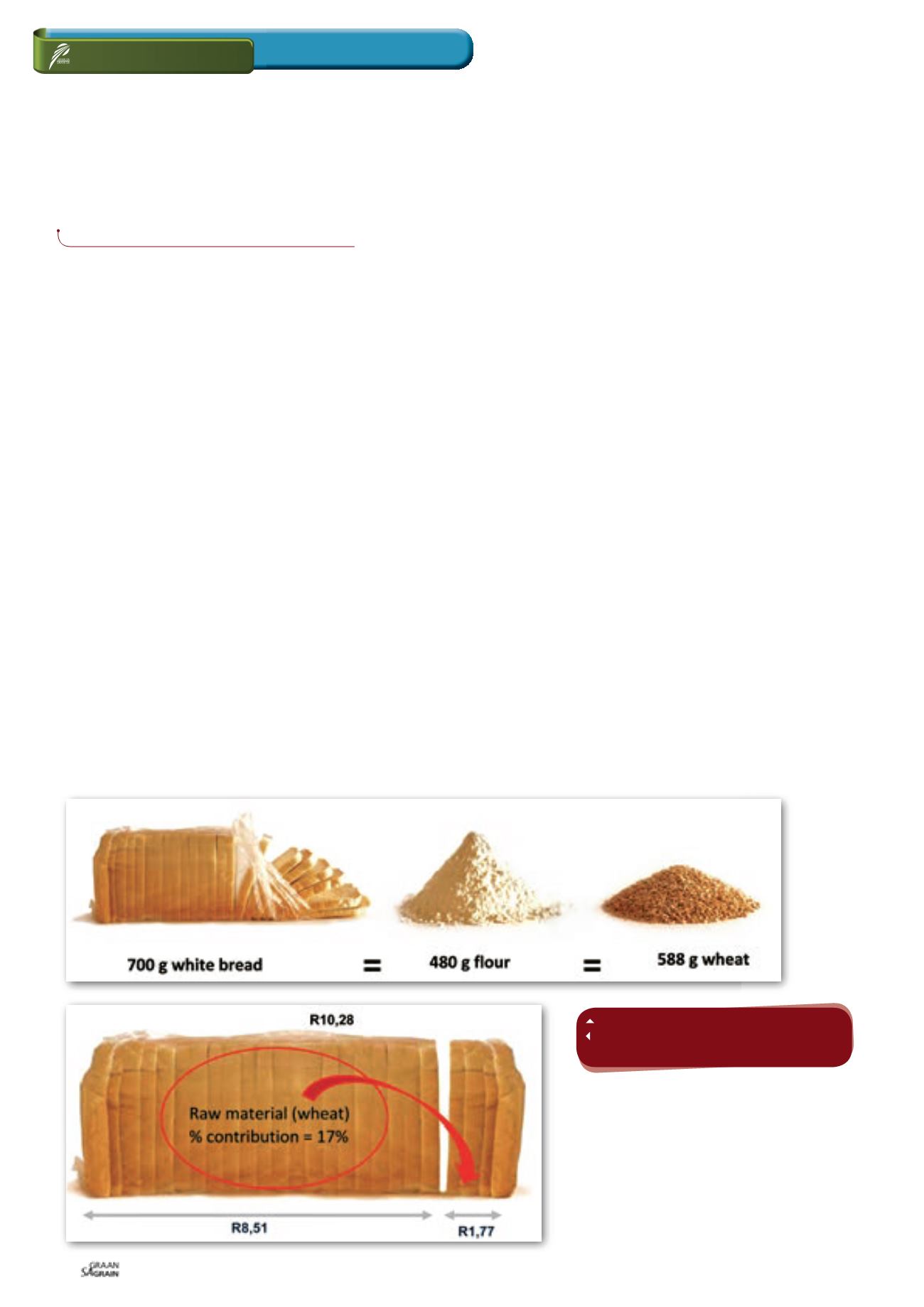
Maart 2014
108
What is a wheat producer’s percentage
share of retail white bread?
B
read is an important staple food in South Africa and
plays an integral role to ensure national food security.
Consumers for the most part do not buy food directly from
producers and the price consumers pay (real retail value) for
food is exceedingly higher than what producers receive (real farm
value) for the raw commodity.
The focus of this article is to highlight the small share the wheat
producer contributes to the price of a loaf of white bread sold at a
retail store. The wheat producer’s share in the retail price of white
bread will be examined to demystify a common misconception that
producers are responsible for the increases in bread prices. The
data in the article is calculated for the last six years to give a proper
overview of a wheat producer’s actual contribution.
Background on the wheat price
The price of wheat for a South African buyer is normally determined
by the international wheat price, the exchange rate and the local
supply and demand for wheat. South Africa is not self-sufficient in
the production of wheat and therefore approximately 50% of its local
consumption is imported.
South Africa’s dependency on imported wheat increased over time
and hence the domestic price for wheat, as reported by Safex, tends
to be close to import parity. These imports contribute to higher
bread prices than would be the case if all South African demand
could be locally produced.
How much wheat in a loaf of white
bread?
In order to calculate the difference between the real farm value and
the real retail value, the following assumptions were made – to bake
a 700 g loaf of white bread, an average of 480 g of flour is needed.
Again, in order to mill that 480 g of flour, 588 g of wheat is required
(
Figure 1
). Thus, approximately 1 700 loaves of white bread can be
produced from 1 ton of wheat.
The price consumers pay for bread versus
the price producers receive for wheat
The Western Cape plays a very important role in the supply of wheat
in South Africa, accounting for between 35% - 40% of total domestic
production. For this reason, the calculations depicted in
Graph 1
are based on a derived producer price of wheat for a Western Cape
producer in order to produce the required 588 g of wheat for one loaf
of white bread.
The derived producer price is determined by calculating the average
annual Safex price for each marketing year and deducting the
relevant costs, such as the location differential as well as handling
and storage costs for grade B2 wheat.
Graph 1 compares the derived producer price of wheat for 588 g of
wheat against the annual average price of a 700 g loaf of white bread
in a retail store. During this six year period, wheat producer prices
declined twice, while bread prices continued to increase, indicating
that producers did not fully share in higher retail prices. This is
particularly true for the 2009 season, where the producer price of
wheat (588 g) decreased from R1,27 in 2008 to R1,01 in 2009 (down
20%), while the price of a 700 g loaf of white bread increased by 9%
from R7,20 to R7,88 over the same period.
The same happened during 2011 where producer prices decreased
by 3%, while the bread price increased by 10%.
Graph 1
clearly
PETRU FOURIE,
economist: Industry Services, Grain SA
RELEVANT
Figure 1: Wheat in a loaf of white bread.
Figure 2: Wheat producer’s percentage share of
the retail white bread price during 2013.


